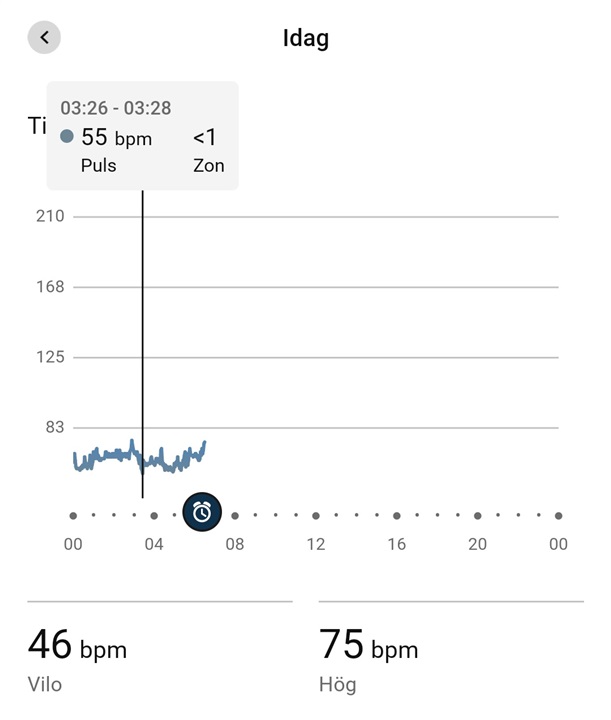During times of sickness the heart rate increases. I am now experiencing a cold with fever and during nighttime my heart rate has been around 60-70. The night to yesterday the lowest single heart rate was 55 beats per minute. Despite this the watch indicates the resting heart rate (to my knowledge defined as the minimal average heart rate during a continuous 30 minute period) is 46 BPM. My best guess is the actual RHR is somewhere around 60.
Is there some kind of algorithm which does not allow the RHR to increase more than a specific amount from day to day or is there something else wrong? Has someone else experienced the same thing? To me, this only happens when I am feeling sick and have an increased heart rate. When the heart rate is normal the RHR can easily be traced to a specific 30 minute period of the heart rate graph. 
As seen above, a horizontal line at 46 BPM would be nowhere near the heart rate graph where the lowest heart rate is at 55 BPM.


